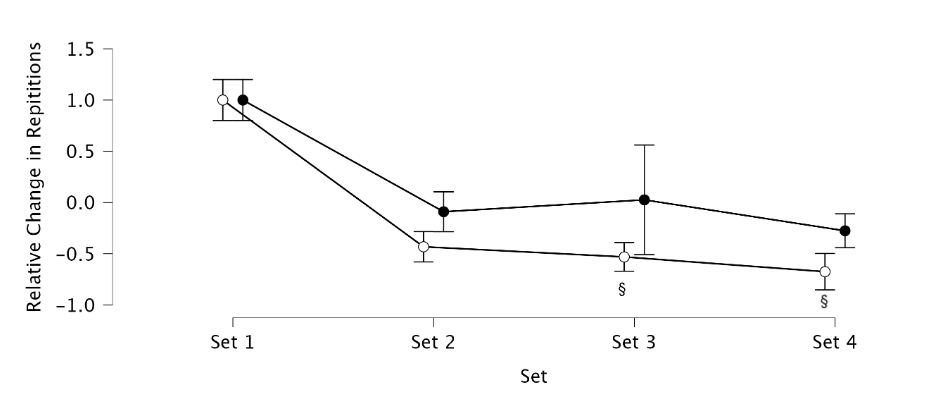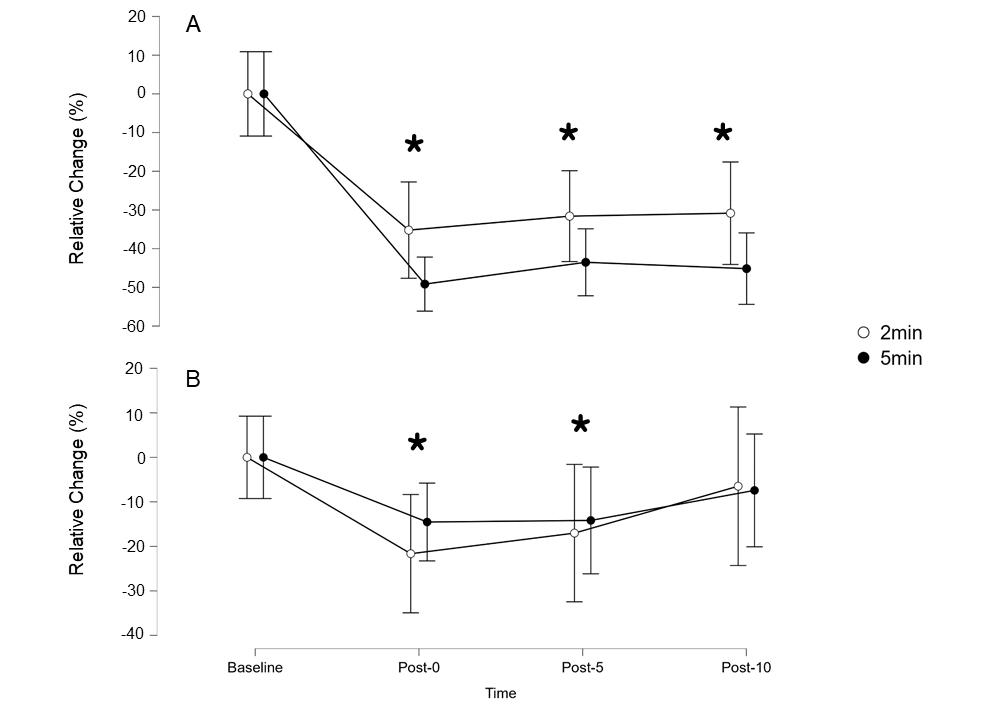Abstract:
Introduction: Manipulation of rest intervals (RIs) between sets during resistance exercise (RE) may affect both performance and hypertrophy outcomes (Grgic et al., 2017; Longo et al., 2020). Longer RIs result in greater volume over multiple sets, and the ability to maintain greater training intensities, which may enhance the effectiveness of RE programs for various outcomes (Schoenfeld et al., 2017; Longo et al., 2020). Little is known about how RIs modulate neuromuscular behaviour underpinning these functional differences. McMahon et al. (2024) showed that 5-minute RIs resulted in maintenance of greater muscle activity, torque and exercise volume over four sets of 8 repetitions at 100% maximal voluntary isometric contractions (MVIC) when compared to 2-minute RIs. Through use of high-density electromyography (HDEMG), the current study aims to further investigate how neuromuscular behaviour is impacted by rest interval duration.
Methods: This study used a within-subjects, randomised, cross-over design. 10 participants (male; 29 ± 5 years; 12 ± 6 years RE experience) undertook two acute bouts of RE (4 sets of 5-seconds isometric knee extensions to failure at 80%MVIC) utilising 2-minute (REST-2) or 5-minute (REST-5) rest intervals. Repetition number, EMG amplitude, median frequency (MF) and spatial distribution of muscle activity were measured during each set using HD-EMG (Quattrocentro EMG, Bio Elettronica). MVICs, EMG and MF were assessed pre-, 0-MINS-POST-, 5-MINS-POST-, and 10-MINS-POST-exercise. A two-way repeated measures ANOVA with set as the within-factor and rest interval as the between factor was used to assess relative changes compared to baseline, with partial eta squared used to determine ANOVA effect sizes.
Results: During RE, for repetitions there was a main effect for set (p = 0.001, ηp2 = 0.666), rest interval (p = 0.014, ηp2 = 0.506) and rest interval × set interaction (p = 0.002, ηp2 = 0.426). Post hoc comparisons showed significant relative reductions in repetitions for REST-2 compared to REST-5 in set 3 and 4 (both p<0.05). For EMG during sets, there were no differences. For MF, there was a main effect for set (p = 0.004, ηp2 = 0.384), but not rest interval (p = 0.823), or rest-interval × set interaction (p = 0.626).
For the time course of recovery, there was a main effect of MVIC in terms of time (p<0.001, ηp2 = 0.831), but not rest interval (p=0.08) nor rest-interval × set interaction (p=0.06). For MVIC EMG, there was main effect of time (p=0.005, ηp2 = 0.373), but not rest interval nor rest-interval × time interaction (p>0.05). Regarding MF, there was a main effect for time (p = <0.001, ηp2 = 0.563) but not rest-interval (p=0.175) or rest interval × time interaction (p = 0.488).
Conclusion: The current findings suggest that 5-minute rest intervals facilitate superior neuromuscular performance compared to 2-minutes. Contrary to previous findings, rest interval did not have a significant effect on muscle activity during RE. During the immediate recovery period, rest interval duration did not modulate subsequent neuromuscular characteristics.


